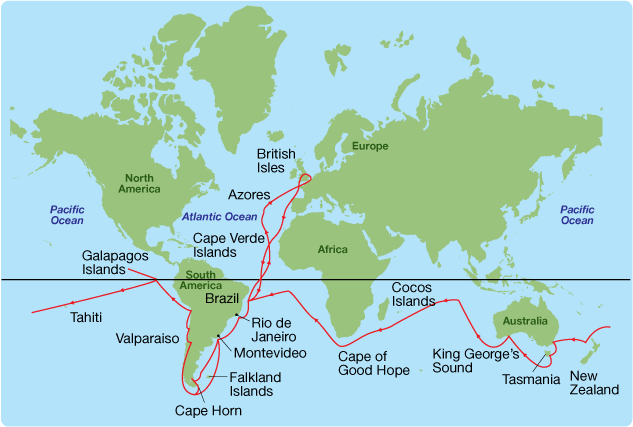Module 4 Intro
1. Module 4 Intro
1.11. Page 2
Module 4—Mechanisms of Population Change
 Explore
Explore
 Read
Read
Scientists, Hypotheses, and Theories
hypothesis: a statement that provides one possible answer to a question or one possible explanation for an observation
By reading pages 122 to 124 in your textbook, you will see how scientific knowledge is accumulated, organized, and used to develop hypotheses and theories. Hypotheses are tested over time and are accepted or rejected. When a hypothesis consistently predicts and correctly explains observations, a scientific theory will eventually develop.
 Try This
Try This
TR 1. Scientists, Hypotheses, and Theories
Use a table to record what you learned about each scientist from the reading.
Store the results in your course folder for a later review and study.
paleontology: the study of ancient life through the examination of fossils
fossils: the remains of past life found in sedimentary rock

© Ismael Montero Verdu/shutterstock
As you read on page 122 of the textbook, Georges Cuvier was a naturalist who developed the science of paleontology. He studied fossils and made predictions about life in the past. He proposed the idea that Earth had experienced many destructive natural events, such as floods and volcanic eruptions. Cuvier proposed that these events were violent enough to have eliminated many species.
 Self-Check
Self-Check
SC 1. A geologist finds the fossil of a species of fish in one stratum, but not in the stratum above the fossil. How do you think Cuvier would explain this observation?
 Self-Check Answer
Self-Check Answer
SC 1. Cuvier would have suggested the species of fish had become extinct, possibly due to a natural catastrophe such as a flood or a volcanic eruption.

Charles Lyell was a geologist who rejected Cuvier’s ideas of violent events killing species. Lyell believed that geological processes operated at the same rate in the past as they do today. The geologist also estimated the age of Earth to be more than 6000 years.
SC 2. How did Lyell’s observations about changes in geology inspire naturalists to think about changes in life on Earth?
 Self-Check Answer
Self-Check Answer
SC 2. Lyell rejected the idea of catastrophism and guessed that Earth changed slowly and continuously over time. His idea also suggested that Earth was older than 6000 years. He believed that slow, continuous change would amount to large changes over time. This influenced other thinkers, such as Charles Darwin, who wondered if the same sort of processes and timelines were also occurring in populations.
SC 3. Science is a process, and much shared knowledge led up to Darwin’s theory of evolution. Using the information from pages 122 to 124 of the textbook, as well as some previous knowledge from Unit A of Biology 20, complete the following science knowledge timeline.
 Read
Read
Darwin’s Evidence

Darwin travelled from England to South America to Australia and back to South America during his five-year voyage aboard the HMS Beagle. Observations he made in England and while exploring caused Darwin to ask many questions about the natural world. Read about Darwin’s observations and the questions that arose from them on pages 125 and 126 in the textbook. Read up to the heading “Further Evidence of Evolution” on page 126.
 Try This
Try This
TR 2. Answering Darwin’s Questions
Darwin used the answers to questions based on his observations to formulate his theory of natural selection. Go to your Lesson 2 Assignment to answer some of Darwin’s questions. The link for this assignment is found at the beginning of this lesson.